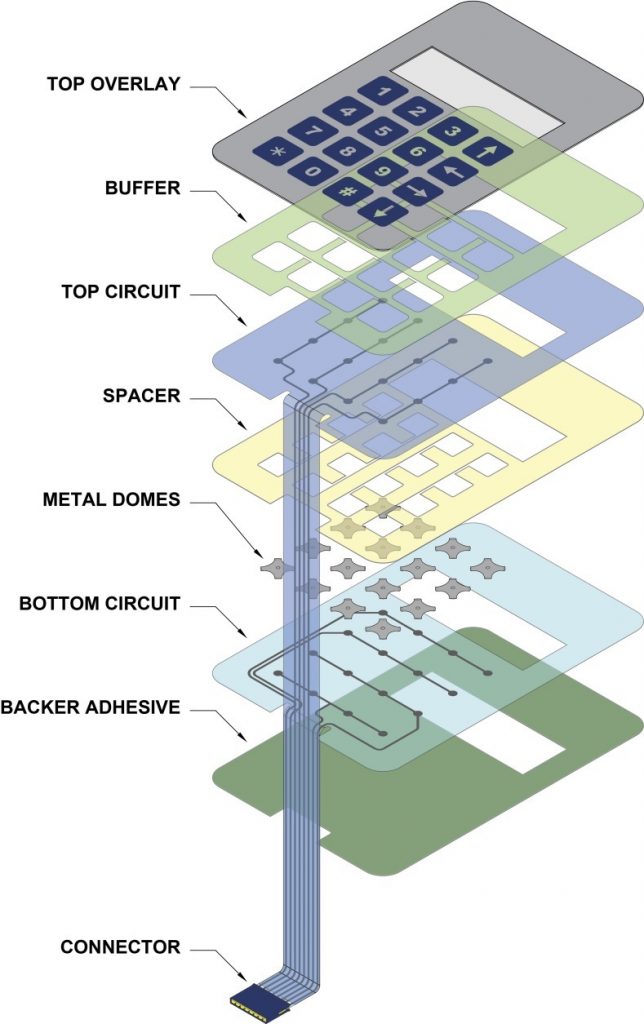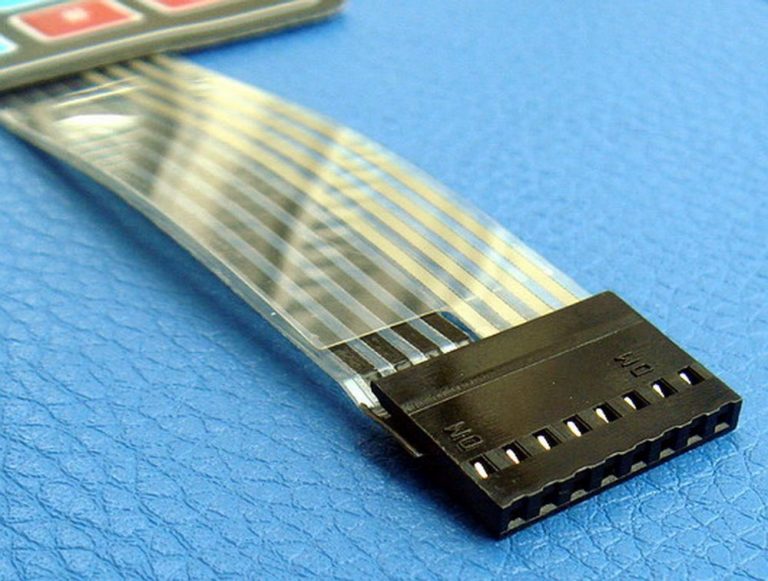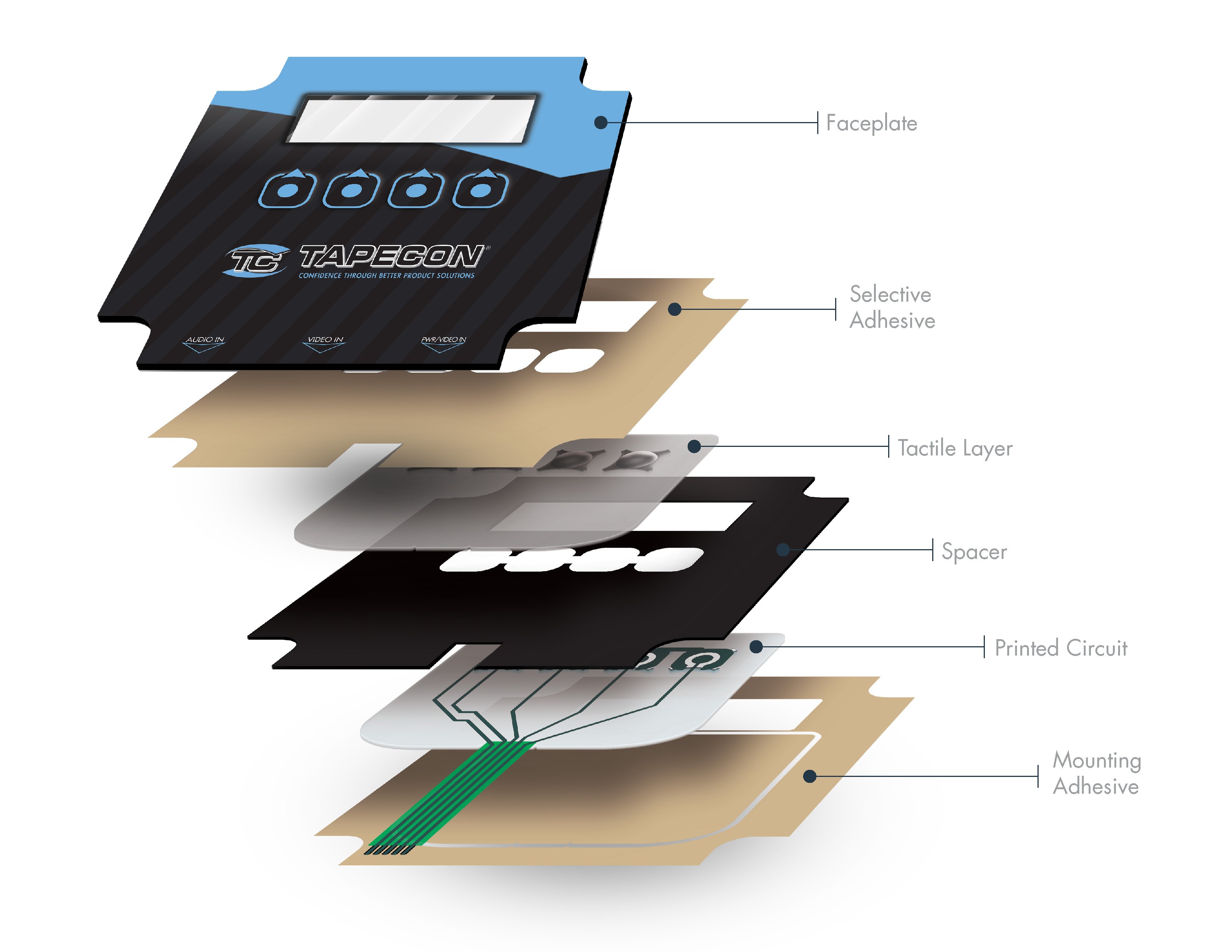How Membrane Switch Technology is Revolutionizing User Interfaces
Wiki Article
Comprehending Membrane Switches: The Key to Long Lasting and Trusted Controls

What Are Membrane Layer Buttons?
Membrane layer buttons are an innovative solution in the realm of interface innovation, incorporating capability and design seamlessly. These devices work as an interface in between individuals and digital systems, incorporating numerous parts right into a portable layout. Typically constructed from flexible, thin layers of materials, membrane buttons are designed to react to touch, enabling customers to interact with equipment and digital tools properly.The key components of a membrane layer switch consist of a printed circuit layer, visuals overlay, and a spacer layer that protects against unintentional activation. The visuals overlay can be customized to reflect brand name identification or customer choices, improving looks while making certain use. Membrane switches are commonly made use of in numerous applications, including medical tools, customer electronics, and industrial tools, owing to their durability and resistance to ecological aspects such as wetness and dust.
Among the crucial advantages of membrane layer buttons is their ability to withstand damage, making them suitable for high-traffic environments. Additionally, they are light-weight and require marginal area, permitting cutting-edge styles in item advancement. Overall, membrane layer switches stand for a effective and practical selection for modern digital interfaces, weding technology with user-centric style principles.
Exactly How Membrane Changes Job
The operation of membrane layer switches depend upon an easy yet reliable mechanism that equates user input into digital signals. These switches include numerous layers, usually consisting of a graphic overlay, a spacer layer, and a circuit layer. When an individual presses the button, the top layer warps, permitting a conductive element in the circuit layer to make call with a corresponding conductive pad on the underside of the visuals overlay. This contact closes the circuit and sends a digital signal to the device, showing that the switch has been turned on.The design of membrane switches can differ, yet they often incorporate domes or tactile aspects to supply responses to the customer, boosting the overall experience - membrane switch. The materials used in membrane switches, such as polyester or polycarbonate, contribute to their sturdiness and resistance to ecological aspects, consisting of dampness and dirt. In addition, the published circuits are commonly enveloped, which shields them from damage with time.
Advantages of Membrane Layer Buttons

Additionally, membrane switches are understood for their toughness. Created from durable products, they are immune to dirt, dampness, and physical wear, which significantly extends their lifespan compared to traditional mechanical switches. This resilience makes them particularly suitable for high-traffic environments and applications requiring longevity.
Another significant advantage is the convenience of cleansing and upkeep. The smooth surface of membrane switches minimizes dust buildup and is usually unsusceptible spills, making them perfect for settings that need constant sanitization.
Additionally, membrane switches supply a streamlined account, bring about a thinner layout that can be incorporated into various devices without including mass. This function not only boosts the visual charm but additionally adds to a much more ergonomic product layout.
Applications of Membrane Switches
Functional and easy to use, membrane layer switches locate applications throughout a variety of sectors, including clinical gadgets, consumer electronic devices, and industrial tools. In the medical area, these switches are integral to tools such as diagnostic tools, individual monitoring systems, and mixture pumps, where dependability and convenience of cleansing are crucial. Their capacity to keep and endure rough atmospheres capability makes them suitable for such applications.
In consumer electronic devices, membrane switches are utilized in items like microwaves, washing makers, and remote controls - membrane switch. Their smooth layout enables for user-friendly interface, enhancing the total individual experience while giving resilience and resistance to put on and tear
Commercial tools also gains from membrane buttons, specifically in control panels for machinery and automation systems. These switches provide defense versus dust and moisture, making sure regular performance in challenging atmospheres. Their customizable functions allow producers to tailor them to certain operational requirements, improving effectiveness and performance.
Selecting the Right Membrane Change
When choosing a membrane switch, it is necessary to think about different elements that influence performance and viability for details applications. The main considerations check these guys out include environmental problems, responsive comments, sturdiness, and design specifications.
First, assess the operating setting; buttons subjected to moisture, chemicals, or severe temperature levels need specific products to make sure durability and functionality. Next off, examine the requirement for responsive responses. Depending upon user communication, some applications might benefit from a tactile action to verify activation, while others might like a non-tactile design for visual reasons.
Resilience is an additional important element; membrane layer switches should be created to endure constant use, influences, and abrasion. Make sure the selected button can endure the anticipated lifecycle, particularly in high-usage situations.

Conclusion
To conclude, membrane layer switches act as necessary elements in the design of sturdy and trustworthy control systems throughout different industries. Their portable style, combined with durable construction and personalized features, boosts individual communication while guaranteeing long life popular environments. The adaptability of membrane changes permits customized solutions that satisfy details operational demands, strengthening their value in modern innovation. As industries continue to advance, Look At This the relevance of go to this website integrating efficient membrane layer switch services can not be overstated.
Membrane changes stand for an essential aspect of modern interface design, blending performance with durability in different applications.Membrane layer buttons are an innovative remedy in the world of customer interface technology, combining functionality and design seamlessly. Usually built from versatile, thin layers of materials, membrane switches are designed to respond to touch, enabling customers to connect with equipment and digital gadgets successfully.
The style of membrane switches can differ, yet they usually include domes or responsive aspects to supply comments to the user, improving the general experience.In verdict, membrane layer changes serve as essential parts in the layout of reputable and resilient control systems across numerous markets.
Report this wiki page